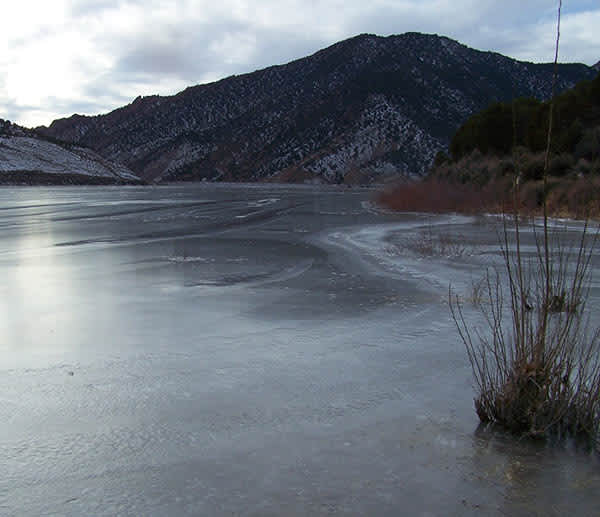Colorado Parks and Wildlife Offers Ice Safety Tips
OutdoorHub 12.19.12

At many higher elevations, ice has started to cover the reservoirs, rivers and ponds, attracting visitors to ice fish, ice skate, ice sail and enjoy other winter activities outdoors. The winter landscapes beckon and there is plenty of room to roam. To safely enjoy winter outdoor recreation adventures on the ice, Colorado Parks and Wildlife offers a few basic safety rules to follow.
Ice conditions vary, so always assume that ice conditions are unsafe and that ice thickness varies from place to place. Four inches of ice will provide a margin of safety and is generally considered safe for ice fishing and ice skating. Snowmobiles and ATVs need at least five inches of ice thickness. The best advice is stay off the ice when there is any question about thickness and conditions.
Be on the lookout for the signs of unsafe ice, including ice of different colors, water on top of the ice, cracks, pressure ridges, open water and bubbles in the ice. Also, beware of ice covered with snow. Sometimes the snow serves as insulation, keeping the ice from melting. Other times, the snow has the opposite effect, insulating the surface from freezing.
When venturing onto the ice, remember the following ice safety tips:
- Never go onto the ice alone. A buddy may be able to call for help if you fall in. Also, never attempt to walk out onto the ice to rescue a friend because you will risk falling through the ice as well.
- Avoid alcoholic beverages while on the ice. Alcohol increases your chances for hypothermia, which is the rapid loss of body temperature.
- Always wear a life jacket or personal flotation device (PFD) over winter clothing. Life jackets can provide excellent flotation and protection from hypothermia.
- Assemble a personal safety kit. Always wear a safety kit on your body when going out onto the ice. Safety kits should include an ice pick, rope and a whistle to call for help.
- Always keep your pets on a leash. Never allow your dog to run out onto the ice and never walk your dog near a frozen lake or pond without a leash. If your dog falls through the ice, do not attempt a rescue. Go for help.
- Reach-Throw-Go. If you can’t reach the person from shore, throw them a flotation device or a rope. If you still can’t help the person quickly—go for help.
If you do fall through the ice, remember these tips:
- Do not panic. Try to remain calm to conserve as much energy as possible. Try to get your arms onto the ice and kick as hard as you can with your feet to help lift you onto the ice, and then roll to safety. If you can’t get out of the cold water by yourself, take appropriate actions to extend your survival time while waiting to be rescued.
- Do not swim. Swimming will cause your body to lose heat much faster than if you stay as still as possible.
- Act slowly and deliberately to conserve heat. Expect a progressive decrease in your strength and ability to move. Make the harder maneuvers at the beginning, while you can.
- Keep your upper body above water. Keep your head and upper body as far out of the water as reasonably possible to conserve body heat.
There is lots of outdoor fun to enjoy at Colorado Parks and Wildlife’s frozen reservoirs and waterways. Just take precautions and follow the safety tips. The special beauty of snow covered landscapes awaits you. Avoid the winter blues by packing up the family ice skates to take the kids for a spin or a twirl. Try ice fishing for a change of pace.

